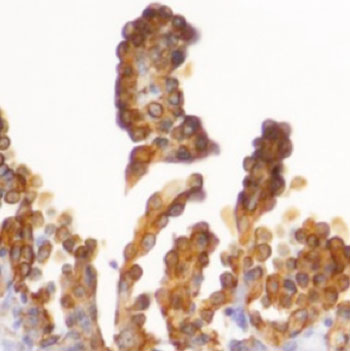Simultaneous Mutations Underlie Ovarian Cancer in Mouse Model
By LabMedica International staff writers
Posted on 12 Feb 2015
Studies carried out on a mouse model of human ovarian clear-cell carcinoma (OCCC) showed that simultaneous mutations in two genes were required to stimulate tumor development.Posted on 12 Feb 2015
OCCC is an aggressive form of ovarian cancer with high ARID1A (AT-rich interactive domain-containing protein 1A) mutation rates. However, a novel OCCC mouse model developed by investigators at the University of North Carolina (Chapel Hill, USA) showed that ARID1A inactivation alone was not sufficient for tumor formation. In addition to the ARID1A mutation, concurrent activation of the phosphoinositide 3-kinase catalytic subunit PIK3CA was also required.

Image: Clusters of ovarian clear cell carcinoma due to mutations in the genes ARID1A and PIK3CA (Photo courtesy of Dr. Ron Chandler, University of North Carolina).
Mice with these mutations developed highly penetrating tumors with OCCC-like histopathology, culminating in hemorrhagic ascites and a median survival period of 7.5 weeks. Furthermore, results published in the January 27, 2015, online edition of the journal Nature Communications revealed that ARID1A and PIK3CA mutations cooperated to promote tumor growth through sustained IL-6 (Interleukin-6) overproduction. IL-6 is a cytokine linked to cell signaling that triggers inflammation.
Treatment of OCCC animals with the pan-PI3K inhibitor, BKM120, prolonged mouse survival by inhibiting the tumor cell growth.
“It is an extremely aggressive model of the disease, which is how this form of ovarian cancer presents in women,” said senior author Dr. Terry Magnuson, professor of genetics at the University of North Carolina. “We think that IL-6 contributes to ovarian clear cell carcinoma and could lead to death. You really do not want this cytokine circulating in your body.”
Related Links:
University of North Carolina













